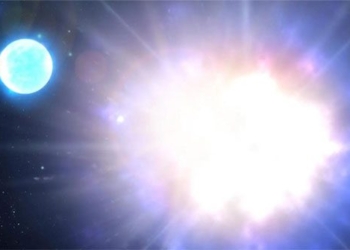Since 1916, scientists have been searching for a colossal meteorite described as a “iron hill” measuring 100 meters across in the Sahara Desert.
A team of three physicists from the Royal Holloway University of London and the University of Oxford in the UK is investigating the circumstances surrounding the mysterious Chinguetti meteorite and has developed a method to confirm whether it truly exists, Phys reported on March 1. In their study published on the arXiv database, Robert Warren, Stephen Warren, and Ekaterini Protopapa propose several potential landing sites for the meteorite, suggesting that conducting a magnetic survey in the area could unravel the mystery of this meteorite.

A piece of the Chinguetti meteorite. (Photo: Claire H/Flickr/CC-BY-SA-2.0).
In 1916, Gaston Ripert, an official at the French consulate, informed his colleagues that he had discovered an “iron hill” in a location within the Sahara Desert, approximately 45 kilometers from the city of Chinguetti, Mauritania, in northwest Africa. Ripert brought back a 4.5 kg piece of iron meteorite, claiming it was taken from the top of the massive 100-meter iron hill. He reported that he was blindfolded and led to this hill by a local resident.
Scientists believe that the only plausible explanation for the existence of such an object in the desert is a meteorite impact. The object is named the Chinguetti meteorite after the nearby city of Chinguetti. Many scientists have examined Ripert’s account and investigated the area where he claimed to have seen the iron hill, but to date, the meteorite’s landing site has not been found. If it exists, it would be the largest remnant (the part of the meteorite that survives the descent through the atmosphere and lands on Earth’s surface) in the world.
In the new study, in addition to reviewing existing clues, Robert, Stephen, and Ekaterini also conducted independent research to solve the mystery. They suggested that the absence of a crater might be due to the meteorite descending at a very shallow angle before hitting the ground. Previous searches may have yielded no results because the iron hill could have been buried under sand, due to inaccurate equipment, or searching in the wrong area.
Interestingly, Ripert described finding metallic “needles” in the small meteorite fragment and claimed he tried to remove them unsuccessfully. Robert, Stephen, and Ekaterini speculate that these ductile structures could be iron-nickel phases known as “Thomson structures”. The concept of this structure did not exist in 1916, making it unlikely that Ripert fabricated such an observation.
In their new research, the team also used digital elevation models, radar data, and interviewed local camel riders for the first time to narrow down the location where Gaston was led. According to Ripert’s account, this journey lasted half a day.
Based on sand dunes tall enough to conceal the colossal meteorite, the research team identified several potential areas. They requested aerial magnetic survey data from the Mauritania Ministry of Mines and Petroleum, but so far have not been granted access. Another method is to conduct a ground survey of the area to search for the meteorite, which would be very time-consuming. “If the results are not promising, the mystery surrounding Ripert’s story will remain unsolved, and the questions regarding the ductile needles and the unexpected discovery of the iron-silicate fragment will linger,” the research team wrote.





















































